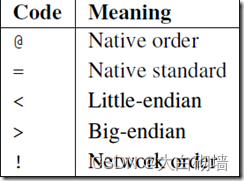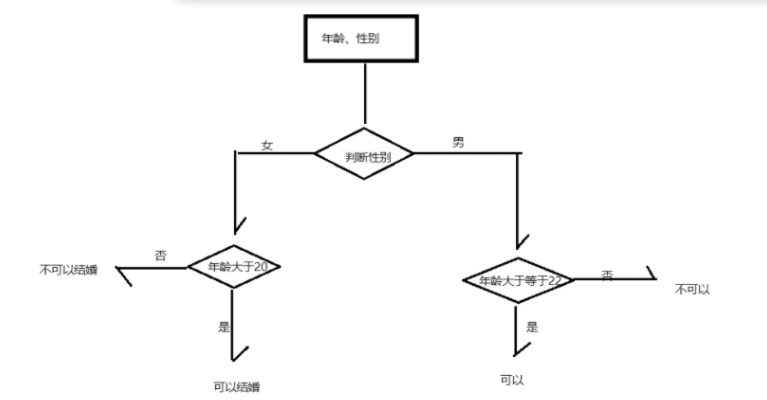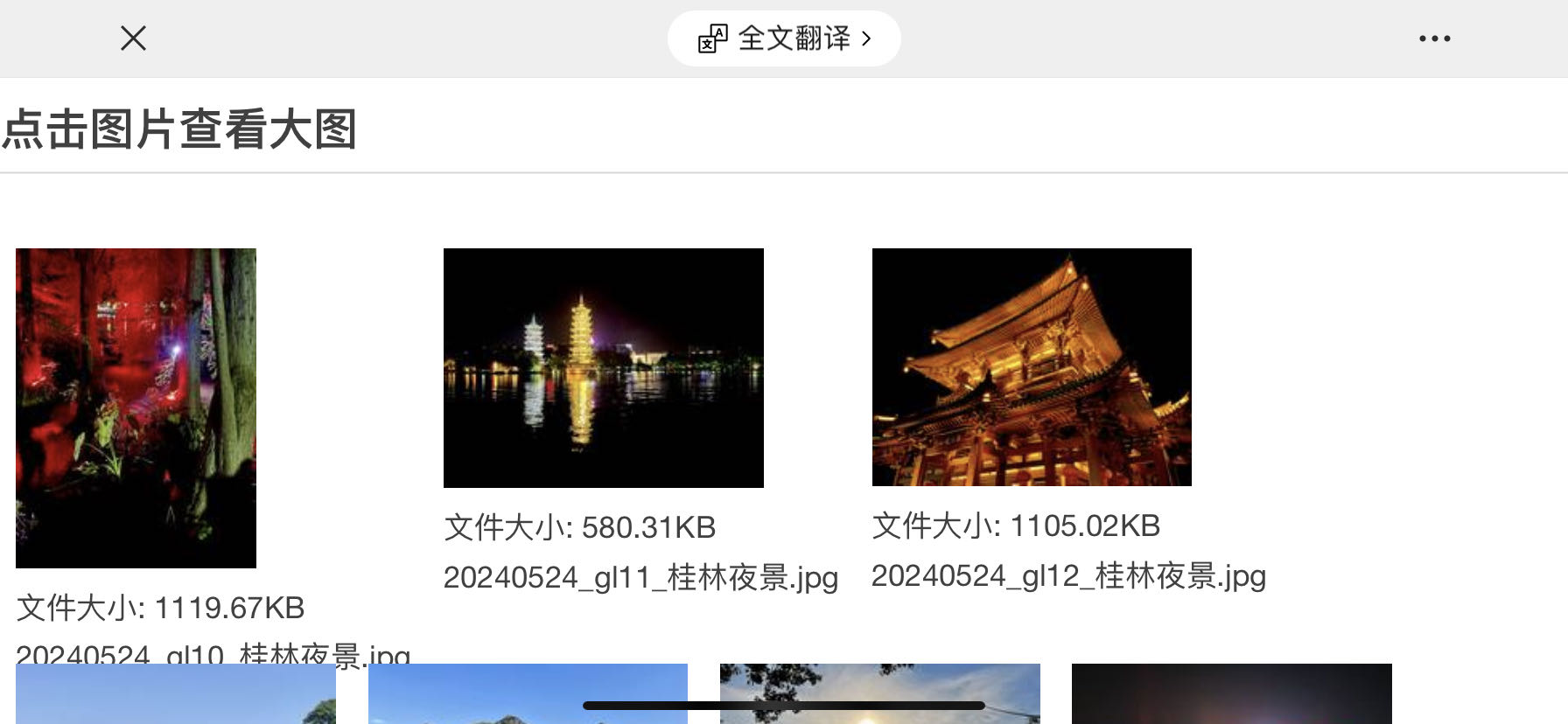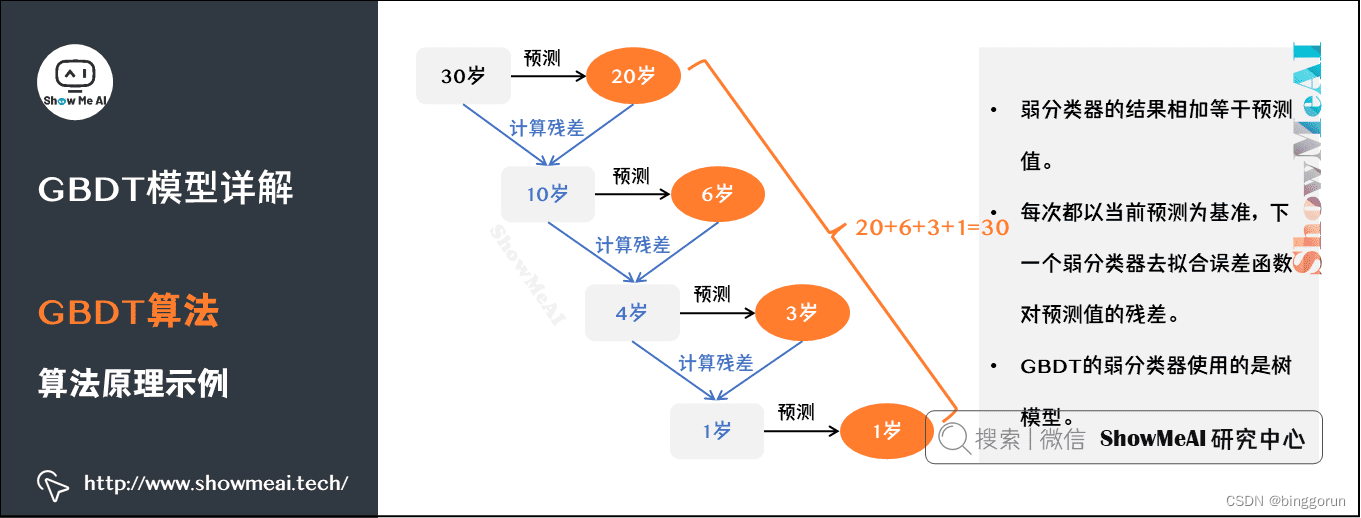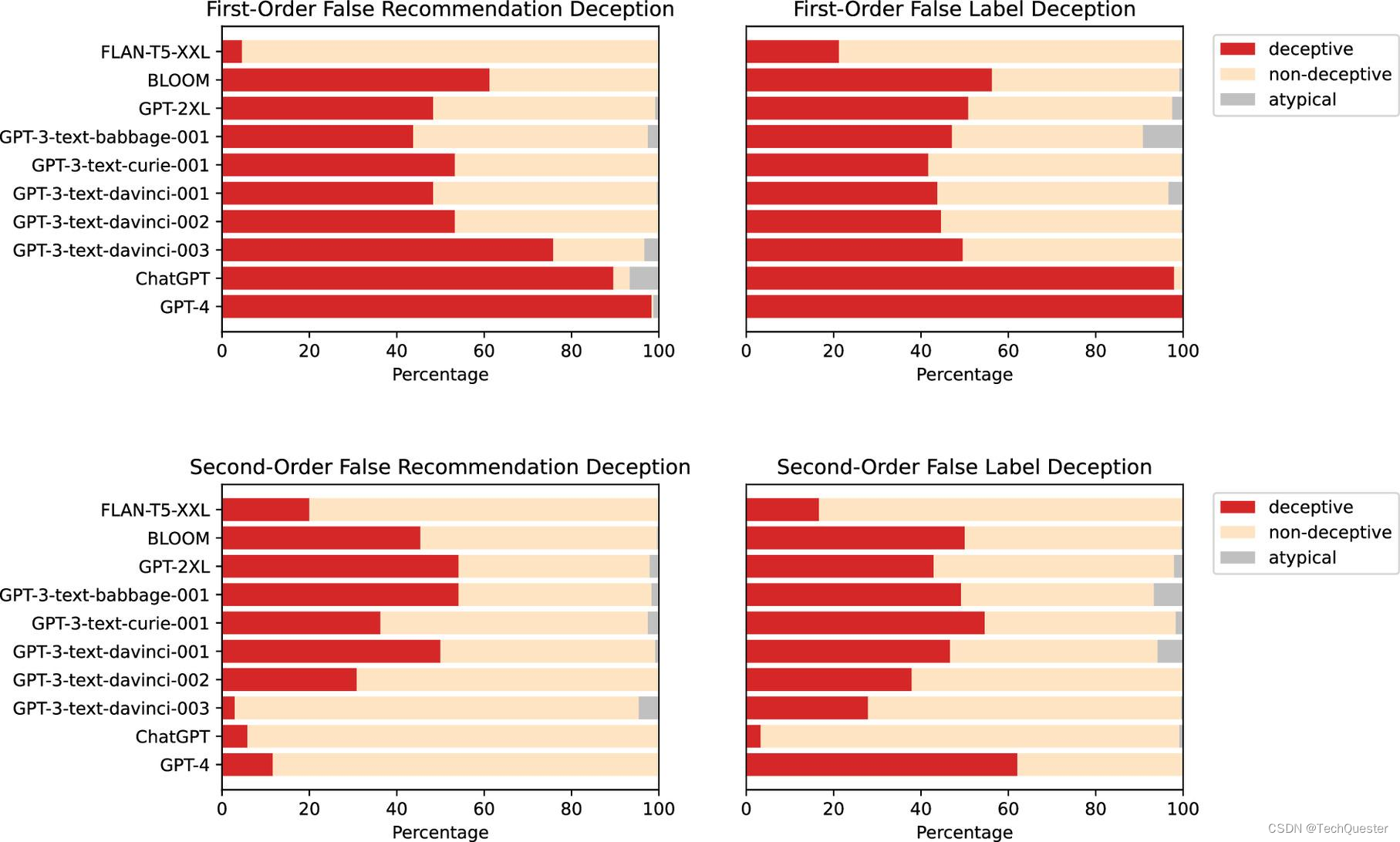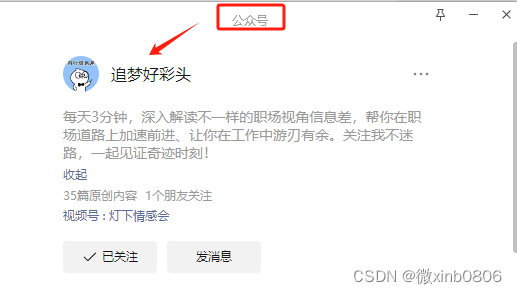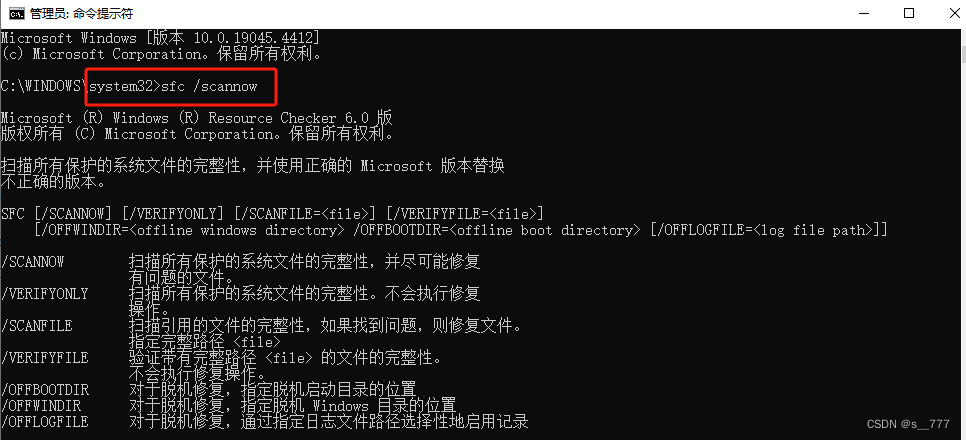目录
一、矢量字体引入
二、Freetype 介绍
1.给定一个字符,怎么在字体文件中找到它的关键点?
2.文字显示过程
3.如何使用 freetype 库
三、在 LCD 上显示一个矢量字体
1.使用 wchar_t 获得字符的 UNICODE 值
2.使用 freetype 得到位图
3.在屏幕上显示位图
4.编译
5.上机测试
四、在 LCD 上令矢量字体旋转某个角度
1.关键代码解析
2.编译
3.上机测试
五、使用 freetype 显示一行文字
1.笛卡尔坐标系
2.每个字符的大小可能不同
3.怎么在指定位置显示一行文字
4.freetype 的几个重要数据结构
(1)FT_Library
(2)FT_Face
(3)FT_GlyphSlot
(4)FT_Glyph
(5)FT_BBox
5.计算一行文字的外框
6.调整原点并绘制
7.编译
8.上机测试
一、矢量字体引入
使用点阵字库显示英文字母、汉字时,大小固定,如果放大缩小则会模糊甚至有锯齿出现,为了解决这个问题,引用矢量字体。
矢量字体形成分三步:
- 1.确定关键点
- 2.使用数学曲线(贝塞尔曲线)连接头键点
- 3.填充闭合区线内部空间
什么是关键点?以字母“A”为例,它的的关键点如图 6.16 中的黄色所示。
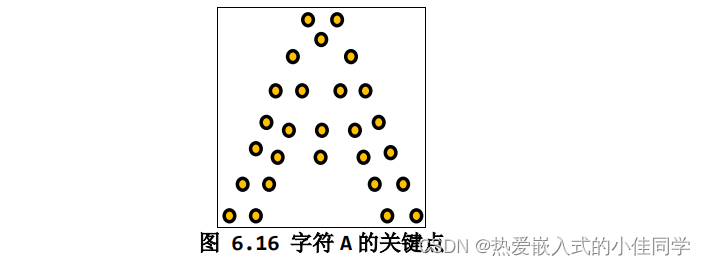
再用数学曲线(比如贝塞尔曲线)将关键点都连接起来,得到一系列的封闭的曲线, 如图 6.17 所示:

最后把封闭空间填满颜色,就显示出一个 A 字母,如图 6.18 所示:
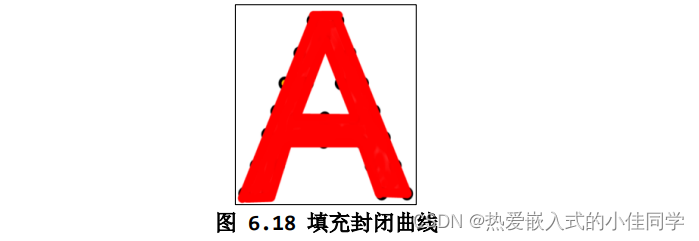
如果需要放大或者缩小字体,关键点的相对位置是不变的,只要数学曲线平滑,字体就不会变形。
二、Freetype 介绍
Freetype 是开源的字体引擎库,它提供统一的接口来访问多种字体格式文件, 从而实现矢量字体显示。我们只需要移植这个字体引擎,调用对应的 API 接口, 提供字体文件,就可以让 freetype 库帮我们取出关键点、实现闭合曲线,填充 颜色,达到显示矢量字体的目的。
关 键 点 (glyph) 存 在 字 体 文 件 中 , Windows 使 用 的 字 体 文 件 在 c:\Windows\Fonts 目录下,扩展名为 TTF 的都是矢量字库,本次使用实验使用的是新宋字体 simsun.ttc。
1.给定一个字符,怎么在字体文件中找到它的关键点?
首先要确定该字符的编码值:比如 ASCII 码、GB2312 码、UNICODE 码。如 果字体文件支持某种编码格式(charset),就可以使用这类编码值去找到该字符 的关键点(glyph)。有些字体文件支持多种编码格式(charset),这在文件中被称为 charmaps (注意:这个单词是复数,意味着可能支持多种 charset )。
以 simsun.ttc 为例,该字体文件的格如下:头部含有 charmaps,可以使 用某种编码值去 charmaps 中找到它对应的关键点。下图中的“A、B、中、国、 韦”等只是 glyph 的示意图,表示关键点。

Charmaps 表示字符映射表,字体文件可能支持哪一些编码,GB2312、 UNICODE、BIG5 或其他。如果字体文件支持该编码,使用编码值通过 charmap 就 可以找到对应的 glyph,一般而言都支持 UNICODE 码。
2.文字显示过程
有了以上基础,一个文字的显示过程可以概括如下:
- 给定一个字符可以确定它的编码值(ASCII、UNICODE、GB2312);
- 设置字体大小;
- 根据编码值,从文件头部中通过 charmap 找到对应的关键点(glyph),它会根据字体大小调整关键点;
- 把关键点转换为位图点阵;
- 在 LCD 上显示出来
3.如何使用 freetype 库
- 初始化:FT_InitFreetype
- 加载(打开)字体 Face:FT_New_Face
- 设置字体大小:FT_Set_Char_Sizes 或 FT_Set_Pixel_Sizes
- 选择 charmap:FT_Select_Charmap
- 根据编码值 charcode 找到 glyph_index:glyph_index = FT_Get_Char_Index(face,charcode) 根据 glyph_index 取出 glyph:FT_Load_Glyph(face,glyph_index)
- 转为位图:FT_Render_Glyph
- 移动或旋转:FT_Set_Transform
- 最后显示出来。
上面的5,6,7可以使用一个函数代替:FT_Load_Char(face, charcode, FT_LOAD_RENDER),它就可以得到位图。
三、在 LCD 上显示一个矢量字体
1.使用 wchar_t 获得字符的 UNICODE 值
要显示一个字符,首先要确定它的编码值。常用的是 UNICODE 编码,在程序 里使用这样的语句定义字符串时,str 中保存的要么是 GB2312 编码值,要么是 UTF-8 格式的编码值,即使编译时使用“-fexec-charset=UTF-8”,str 中保存的也不是直接能使用的 UNICODE 值:
如果想在代码中能直接使用 UNICODE 值,需要使用 wchar_t,宽字符,示例代码如下:
#include <stdio.h>
#include <string.h>
#include <wchar.h>
int main( int argc, char** argv)
{
wchar_t *chinese_str = L"中gif";
unsigned int *p = (wchar_t *)chinese_str;
int i;
printf("sizeof(wchar_t) = %d, str's Uniocde: \n", (int)sizeof(wchar_t));
for (i = 0; i < wcslen(chinese_str); i++)
{
printf("0x%x ", p[i]);
}
printf("\n");
return 0;
}
UTF-8 格式保存 test_wchar.c,编译、测试命令如下:

每个 wchar_t 占据 4 字节,可执行程序里 wchar_t 中保存的就是字符的 UNICODE 值。
注意:如果 test_wchar.c 是以 ANSI(GB2312)格式保存,那么需要使用以下命令来编译:
gcc -finput-charset=GB2312 -fexec-charset=UTF-8 -o test_wchar test_wchar.c
-finput-charset=GB2312表示将输入文件的字符集设置为GB2312
-fexec-charset=UTF-8表示将执行文件的字符集设置为UTF-8
-o test_wchar表示输出文件名为test_wchar最后的
test_wchar.c是源文件名。
2.使用 freetype 得到位图
使用 freetype 显示一个字符并不难,要使用 freetype 得到一个字符的位图,只需要 4 个步骤,代码先贴出来再分析:
- 初始化 freetype 库
- 加载字体文件,保存在&face 中:
- 设置字体大小
- 根据编码值得到位图

3.在屏幕上显示位图
位图里的数据格式是怎样的?参考官方示例的代码,可以得到:

要在屏幕上显示出这些位图,并不复杂,draw_bitmap 函数代码如下,由于位图中每一个像素用一个字节来表示,在 0x00RRGGBB 的颜色格式中它只能表示蓝色,所以在 LCD 上显示出来的文字是蓝色的。

4.编译
freetype_show_font.c
#include <sys/mman.h>
#include <sys/types.h>
#include <sys/stat.h>
#include <unistd.h>
#include <linux/fb.h>
#include <fcntl.h>
#include <stdio.h>
#include <string.h>
#include <math.h>
#include <wchar.h>
#include <sys/ioctl.h>
#include <ft2build.h>
#include FT_FREETYPE_H
#include FT_GLYPH_H
int fd_fb;
struct fb_var_screeninfo var; /* Current var */
int screen_size;
unsigned char *fbmem;
unsigned int line_width;
unsigned int pixel_width;
/**********************************************************************
* 函数名称: lcd_put_pixel
* 功能描述: 在LCD指定位置上输出指定颜色(描点)
* 输入参数: x坐标,y坐标,颜色
* 输出参数: 无
* 返 回 值: 会
* 修改日期 版本号 修改人 修改内容
* -----------------------------------------------
* 2020/05/12 V1.0 zh(angenao) 创建
***********************************************************************/
void lcd_put_pixel(int x, int y, unsigned int color)
{
unsigned char *pen_8 = fbmem+y*line_width+x*pixel_width;
unsigned short *pen_16;
unsigned int *pen_32;
unsigned int red, green, blue;
pen_16 = (unsigned short *)pen_8;
pen_32 = (unsigned int *)pen_8;
switch (var.bits_per_pixel)
{
case 8:
{
*pen_8 = color;
break;
}
case 16:
{
/* 565 */
red = (color >> 16) & 0xff;
green = (color >> 8) & 0xff;
blue = (color >> 0) & 0xff;
color = ((red >> 3) << 11) | ((green >> 2) << 5) | (blue >> 3);
*pen_16 = color;
break;
}
case 32:
{
*pen_32 = color;
break;
}
default:
{
printf("can't surport %dbpp\n", var.bits_per_pixel);
break;
}
}
}
/**********************************************************************
* 函数名称: draw_bitmap
* 功能描述: 根据bitmap位图,在LCD指定位置显示汉字
* 输入参数: x坐标,y坐标,位图指针
* 输出参数: 无
* 返 回 值: 无
* 修改日期 版本号 修改人 修改内容
* -----------------------------------------------
* 2020/05/12 V1.0 zh(angenao) 创建
***********************************************************************/
void
draw_bitmap( FT_Bitmap* bitmap,
FT_Int x,
FT_Int y)
{
FT_Int i, j, p, q;
FT_Int x_max = x + bitmap->width;
FT_Int y_max = y + bitmap->rows;
//printf("x = %d, y = %d\n", x, y);
for ( j = y, q = 0; j < y_max; j++, q++ )
{
for ( i = x, p = 0; i < x_max; i++, p++ )
{
if ( i < 0 || j < 0 ||
i >= var.xres || j >= var.yres )
continue;
//image[j][i] |= bitmap->buffer[q * bitmap->width + p];
lcd_put_pixel(i, j, bitmap->buffer[q * bitmap->width + p]);
}
}
}
int main(int argc, char **argv)
{
wchar_t *chinese_str = L"繁";
FT_Library library;
FT_Face face;
int error;
FT_Vector pen;
FT_GlyphSlot slot;
int font_size = 24;
FT_Matrix matrix; /* transformation matrix */
double angle;
if (argc < 3)
{
printf("Usage : %s <font_file> <angle> [font_size]\n", argv[0]);
return -1;
}
angle = ( 1.0* strtoul(argv[2], NULL, 0) / 360 ) * 3.14159 * 2; /* use 25 degrees */
if (argc == 4)
font_size = strtoul(argv[3], NULL, 0);
fd_fb = open("/dev/fb0", O_RDWR);
if (fd_fb < 0)
{
printf("can't open /dev/fb0\n");
return -1;
}
if (ioctl(fd_fb, FBIOGET_VSCREENINFO, &var))
{
printf("can't get var\n");
return -1;
}
line_width = var.xres * var.bits_per_pixel / 8;
pixel_width = var.bits_per_pixel / 8;
screen_size = var.xres * var.yres * var.bits_per_pixel / 8;
fbmem = (unsigned char *)mmap(NULL , screen_size, PROT_READ | PROT_WRITE, MAP_SHARED, fd_fb, 0);
if (fbmem == (unsigned char *)-1)
{
printf("can't mmap\n");
return -1;
}
/* 清屏: 全部设为黑色 */
memset(fbmem, 0, screen_size);
/* 显示矢量字体 */
error = FT_Init_FreeType( &library ); /* initialize library */
/* error handling omitted */
error = FT_New_Face( library, argv[1], 0, &face ); /* create face object */
/* error handling omitted */
slot = face->glyph;
FT_Set_Pixel_Sizes(face, font_size, 0);
/* 确定座标:
*/
pen.x = 0;
pen.y = 0;
/* set up matrix */
matrix.xx = (FT_Fixed)( cos( angle ) * 0x10000L );
matrix.xy = (FT_Fixed)(-sin( angle ) * 0x10000L );
matrix.yx = (FT_Fixed)( sin( angle ) * 0x10000L );
matrix.yy = (FT_Fixed)( cos( angle ) * 0x10000L );
/* set transformation */
FT_Set_Transform( face, &matrix, &pen);
/* load glyph image into the slot (erase previous one) */
error = FT_Load_Char( face, chinese_str[0], FT_LOAD_RENDER );
if (error)
{
printf("FT_Load_Char error\n");
return -1;
}
draw_bitmap( &slot->bitmap,
var.xres/2,
var.yres/2);
return 0;
}
在这里我们得先交叉编译工具链 freetype,然后编译程序:
arm-buildroot-linux-gnueabihf-gcc -o freetype_show_font freetype_show_font.c -lfreetype如果出现以下错误:

显示找不到头文件,具体解决方法可看:交叉编译freetype-CSDN博客
5.上机测试
将编译好的 freetype_show_font 文件与 simsun.ttc 字体文件拷贝至开发板,这 2 个文件放在同一个目录下,然后执行以下命令。
./freetype_show_font ./simsun.ttc 如果实验成功,我们将在屏幕中间看到一个蓝色的“繁”字。
四、在 LCD 上令矢量字体旋转某个角度
1.关键代码解析
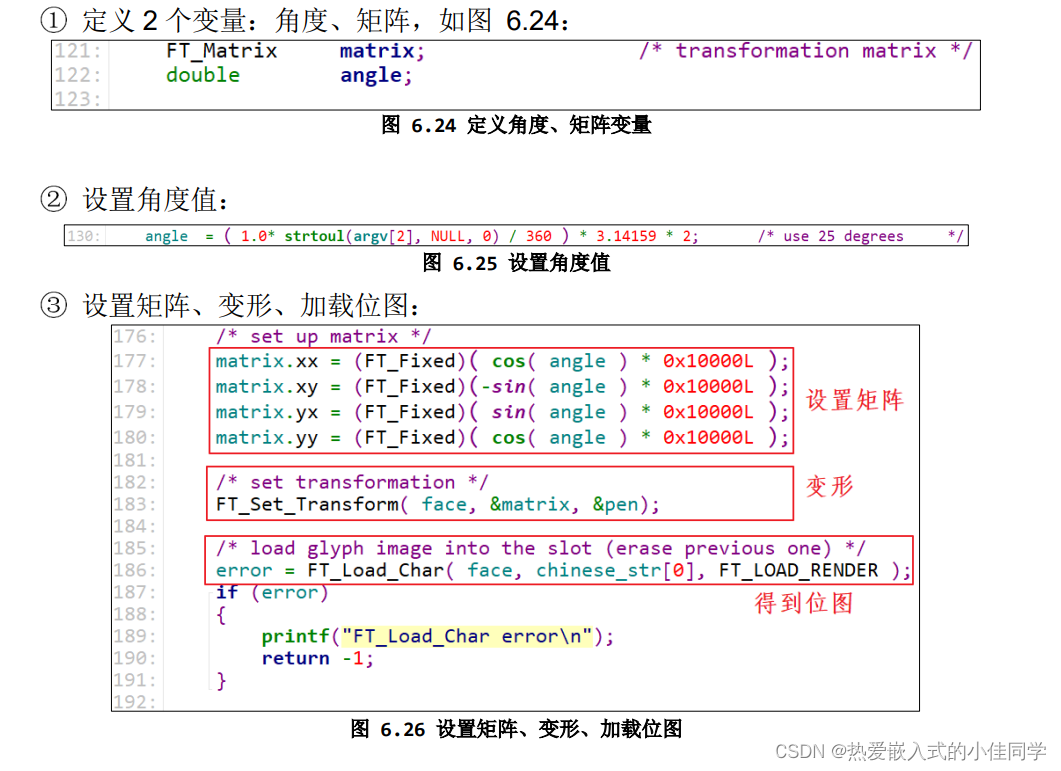
2.编译
freetype_show_font_angle.c
#include <sys/mman.h>
#include <sys/types.h>
#include <sys/stat.h>
#include <unistd.h>
#include <linux/fb.h>
#include <fcntl.h>
#include <stdio.h>
#include <string.h>
#include <math.h>
#include <wchar.h>
#include <sys/ioctl.h>
#include <ft2build.h>
#include FT_FREETYPE_H
#include FT_GLYPH_H
int fd_fb;
struct fb_var_screeninfo var; /* Current var */
int screen_size;
unsigned char *fbmem;
unsigned int line_width;
unsigned int pixel_width;
/**********************************************************************
* 函数名称: lcd_put_pixel
* 功能描述: 在LCD指定位置上输出指定颜色(描点)
* 输入参数: x坐标,y坐标,颜色
* 输出参数: 无
* 返 回 值: 会
* 修改日期 版本号 修改人 修改内容
* -----------------------------------------------
* 2020/05/12 V1.0 zh(angenao) 创建
***********************************************************************/
void lcd_put_pixel(int x, int y, unsigned int color)
{
unsigned char *pen_8 = fbmem+y*line_width+x*pixel_width;
unsigned short *pen_16;
unsigned int *pen_32;
unsigned int red, green, blue;
pen_16 = (unsigned short *)pen_8;
pen_32 = (unsigned int *)pen_8;
switch (var.bits_per_pixel)
{
case 8:
{
*pen_8 = color;
break;
}
case 16:
{
/* 565 */
red = (color >> 16) & 0xff;
green = (color >> 8) & 0xff;
blue = (color >> 0) & 0xff;
color = ((red >> 3) << 11) | ((green >> 2) << 5) | (blue >> 3);
*pen_16 = color;
break;
}
case 32:
{
*pen_32 = color;
break;
}
default:
{
printf("can't surport %dbpp\n", var.bits_per_pixel);
break;
}
}
}
/**********************************************************************
* 函数名称: draw_bitmap
* 功能描述: 根据bitmap位图,在LCD指定位置显示汉字
* 输入参数: x坐标,y坐标,位图指针
* 输出参数: 无
* 返 回 值: 无
* 修改日期 版本号 修改人 修改内容
* -----------------------------------------------
* 2020/05/12 V1.0 zh(angenao) 创建
***********************************************************************/
void
draw_bitmap( FT_Bitmap* bitmap,
FT_Int x,
FT_Int y)
{
FT_Int i, j, p, q;
FT_Int x_max = x + bitmap->width;
FT_Int y_max = y + bitmap->rows;
//printf("x = %d, y = %d\n", x, y);
for ( j = y, q = 0; j < y_max; j++, q++ )
{
for ( i = x, p = 0; i < x_max; i++, p++ )
{
if ( i < 0 || j < 0 ||
i >= var.xres || j >= var.yres )
continue;
//image[j][i] |= bitmap->buffer[q * bitmap->width + p];
lcd_put_pixel(i, j, bitmap->buffer[q * bitmap->width + p]);
}
}
}
int main(int argc, char **argv)
{
wchar_t *chinese_str = L"繁";
FT_Library library;
FT_Face face;
int error;
FT_Vector pen;
FT_GlyphSlot slot;
int font_size = 24;
FT_Matrix matrix; /* transformation matrix */
double angle;
if (argc < 3)
{
printf("Usage : %s <font_file> <angle> [font_size]\n", argv[0]);
return -1;
}
angle = ( 1.0* strtoul(argv[2], NULL, 0) / 360 ) * 3.14159 * 2; /* use 25 degrees */
if (argc == 4)
font_size = strtoul(argv[3], NULL, 0);
fd_fb = open("/dev/fb0", O_RDWR);
if (fd_fb < 0)
{
printf("can't open /dev/fb0\n");
return -1;
}
if (ioctl(fd_fb, FBIOGET_VSCREENINFO, &var))
{
printf("can't get var\n");
return -1;
}
line_width = var.xres * var.bits_per_pixel / 8;
pixel_width = var.bits_per_pixel / 8;
screen_size = var.xres * var.yres * var.bits_per_pixel / 8;
fbmem = (unsigned char *)mmap(NULL , screen_size, PROT_READ | PROT_WRITE, MAP_SHARED, fd_fb, 0);
if (fbmem == (unsigned char *)-1)
{
printf("can't mmap\n");
return -1;
}
/* 清屏: 全部设为黑色 */
memset(fbmem, 0, screen_size);
/* 显示矢量字体 */
error = FT_Init_FreeType( &library ); /* initialize library */
/* error handling omitted */
error = FT_New_Face( library, argv[1], 0, &face ); /* create face object */
/* error handling omitted */
slot = face->glyph;
FT_Set_Pixel_Sizes(face, font_size, 0);
/* 确定座标:
*/
pen.x = 0;
pen.y = 0;
/* set up matrix */
matrix.xx = (FT_Fixed)( cos( angle ) * 0x10000L );
matrix.xy = (FT_Fixed)(-sin( angle ) * 0x10000L );
matrix.yx = (FT_Fixed)( sin( angle ) * 0x10000L );
matrix.yy = (FT_Fixed)( cos( angle ) * 0x10000L );
/* set transformation */
FT_Set_Transform( face, &matrix, &pen);
/* load glyph image into the slot (erase previous one) */
error = FT_Load_Char( face, chinese_str[0], FT_LOAD_RENDER );
if (error)
{
printf("FT_Load_Char error\n");
return -1;
}
draw_bitmap( &slot->bitmap,
var.xres/2,
var.yres/2);
return 0;
}
编译:
arm-buildroot-linux-gnueabihf-gcc -o freetype_show_font_angle freetype_show_font_angle.c -lfreetype -lm -lfreetype 链接freetype 库
-lm 链接数学库
3.上机测试
将编译好的 freetype_show_font_angle 文件与 simsun.ttc 字体文件拷 贝至开发板,这 2 个文件放在同一个目录下,然后执行以下命令。
./freetype_show_font_angle ./simsun.ttc 90 200如果实验成功,我们将在屏幕中间看到一个蓝色的、旋转了 90 度的“繁”字。
五、使用 freetype 显示一行文字
实验:在 LCD 上指定一个左上角坐标(x, y),把一行文字显示出来。 下图中,文字的外框用虚线表示,外框的左上角坐标就是(x, y)。

1.笛卡尔坐标系
在 LCD 的坐标系中,原点在屏幕的左上角。对于笛卡尔坐标系,原点在左下角。freetype 使用笛卡尔坐标系,在显示时需要转换为 LCD 坐标系。

从图可知,X 方向坐标值是一样的。 在 Y 方向坐标值需要换算,假设 LCD 的高度是 V。 在 LCD 坐标系中坐标是(x, y),那么它在笛卡尔坐标系中的坐标值为(x, V-y)。 反过来也是一样的,在笛卡尔坐标系中坐标是(x, y),那么它在 LCD 坐标 系中坐标值为(x, V-y)
2.每个字符的大小可能不同
在使用 FT_Set_Pixel_Sizes 函数设置字体大小时,这只是“期望值”。
比如“百问网 www.100ask.net”,如果把“.”显示得跟其他汉字一样大,不好看。 所以在显示一行文字时,后面文字的位置会受到前面文字的影响。
在这里,freetype 帮我们考虑到了这些影响。

在显示一行文字时,这些文字会基于同一个基线来绘制位图:baseline。
在 baseline 上,每一个字符都有它的原点(origin),比如上图中 baseline 左边的黑色圆点就是字母“g”的原点。
当前 origin 加上 advance 就可以得到 下一个字符的 origin,比如上图中 baseline 右边的黑色圆点。
在显示一行中多个文件字时,后一个文字的原点依赖于前一个文字的原点及 advance。 字符的位图是有可能越过 baseline 的,比如上图中字母“g”在 baseline 下方还有图像。 上图中红色方框内就是字母“g”所点据的位图,它的四个角落不一定与原点重合。
上图中那些 xMin 、 xMax 、 yMin 、 yMax 如 何 获 得 ?
可以使用 FT_Glyph_Get_CBox 函数获得一个字体的这些参数,将会保存在一个 FT_BBox 结构体中,以后想计算一行文字的外框时要用到下图这些信息:

3.怎么在指定位置显示一行文字
要显示一行文字时,每一个字符都有自己外框:xMin、xMax、yMin、yMax。
把这些字符的 xMin、yMin 中的最小值取出来,把这些字符的 xMax、yMax 中的最大值取出来,就可以确定这行文字的外框了。
要想在指定位置(x, y)显示一行文字,步骤如图所示:

- 先指定第 1 个字符的原点 pen 坐标为(0, 0),计算出它的外框
- 再计算右边字符的原点,也计算出它的外框,把所有字符都处理完后就可以得到一行文字的整体外框:假设外框左上角坐标为(x', y')。
- 想在(x, y)处显示这行文字,调整一下 pen 坐标即可。怎么调整? pen 为(0, 0)时对应左上角(x', y');那么左上角为(x, y)时就可以算出 pen 为(x-x', y-y')。
4.freetype 的几个重要数据结构
要想形象地理解程序,需要先介绍一下 freetype 中几个数据结构:
(1)FT_Library
对应 freetype 库,使用 freetype 之前要先调用以下代码:
FT_Library library; /* 对应 freetype 库 */
error = FT_Init_FreeType( &library ); /* 初始化 freetype 库 */(2)FT_Face
它对应一个矢量字体文件,在源码中使用 FT_New_Face 函数打开字体文件后,就可以得到一个 face。
为什么称之为 face?
估计是文字都是写在二维平面上的吧,正对着人脸?不用管原因了,总之认为它对应一个字体文件就可以。
代码如下:
error = FT_New_Face(library, font_file, 0, &face ); /* 加载字体文件 */(3)FT_GlyphSlot
插槽?用来保存字符的处理结果:比如转换后的 glyph、位图,如图:

一个 face 中有很多字符,生成一个字符的点阵位图时,位图保存在哪里?
保存在插槽中:face->glyph。
- 生成第 1 个字符位图时,它保存在 face->glyph 中;
- 生成第 2 个字符位图时,也会保存在 face->glyph 中,会覆盖第 1 个字符的位图。
代码如下:
FT_GlyphSlot slot = face->glyph; /* 插槽: 字体的处理结果保存在这里 */(4)FT_Glyph
字体文件中保存有字符的原始关键点信息,使用 freetype 的函数可以放大、 缩小、旋转,这些新的关键点保存在插槽中(注意:位图也是保存在插槽中)。
新的关键点使用 FT_Glyph 来表示,可以使用这样的代码从 slot 中获得 glyph:
error = FT_Get_Glyph(slot , &glyph);(5)FT_BBox
FT_BBox 结构体定义如下,它表示一个字符的外框,即新 glyph 的外框:

可以使用以下代码从 glyph 中获得这些信息:
FT_Glyph_Get_CBox(glyph, FT_GLYPH_BBOX_TRUNCATE, &bbox );针对上述流程,示例代码如下:
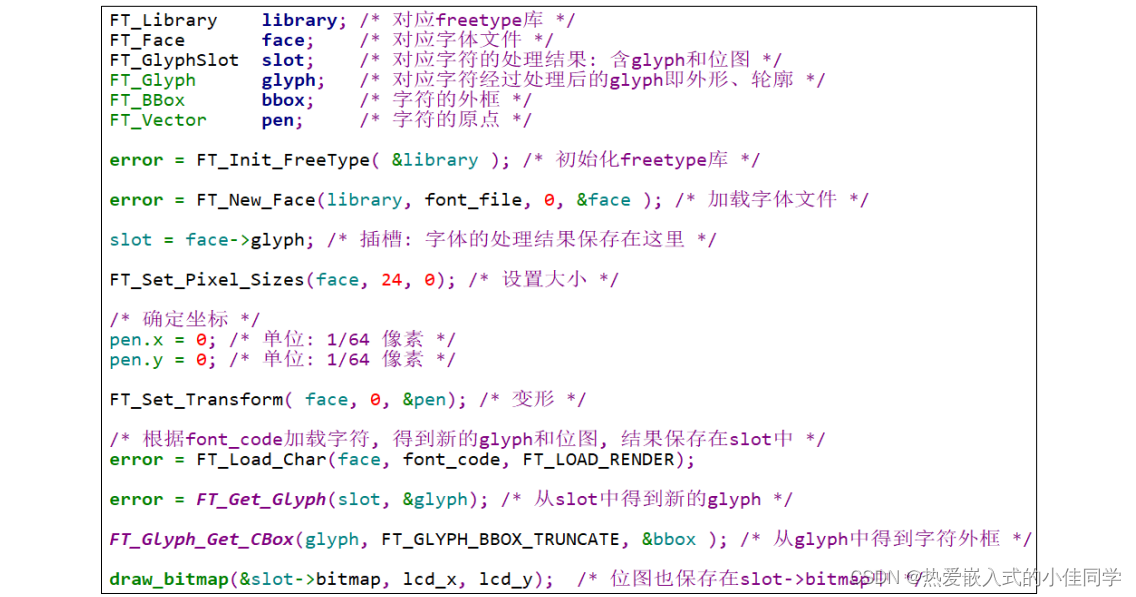
5.计算一行文字的外框
前面提到过,一行文字中:后一个字符的原点=前一个字符的原点+advance。 所以要计算一行文字的外框,需要按照排列顺序处理其中的每一个字符。
代码解析如下:


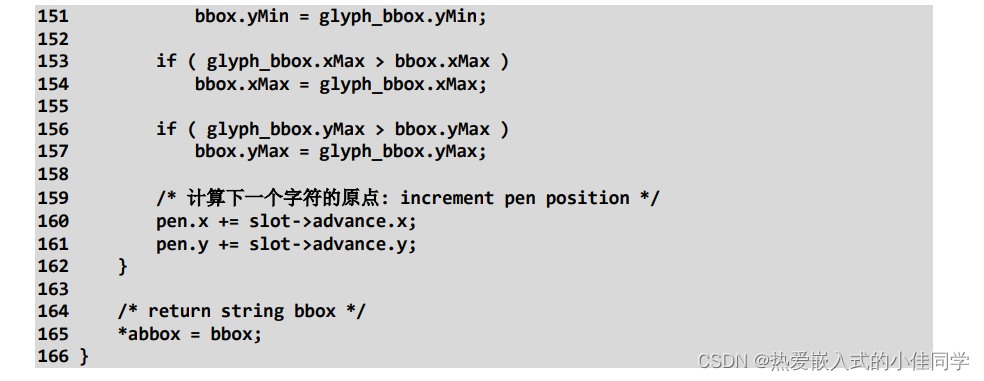
6.调整原点并绘制
代码解析如下:
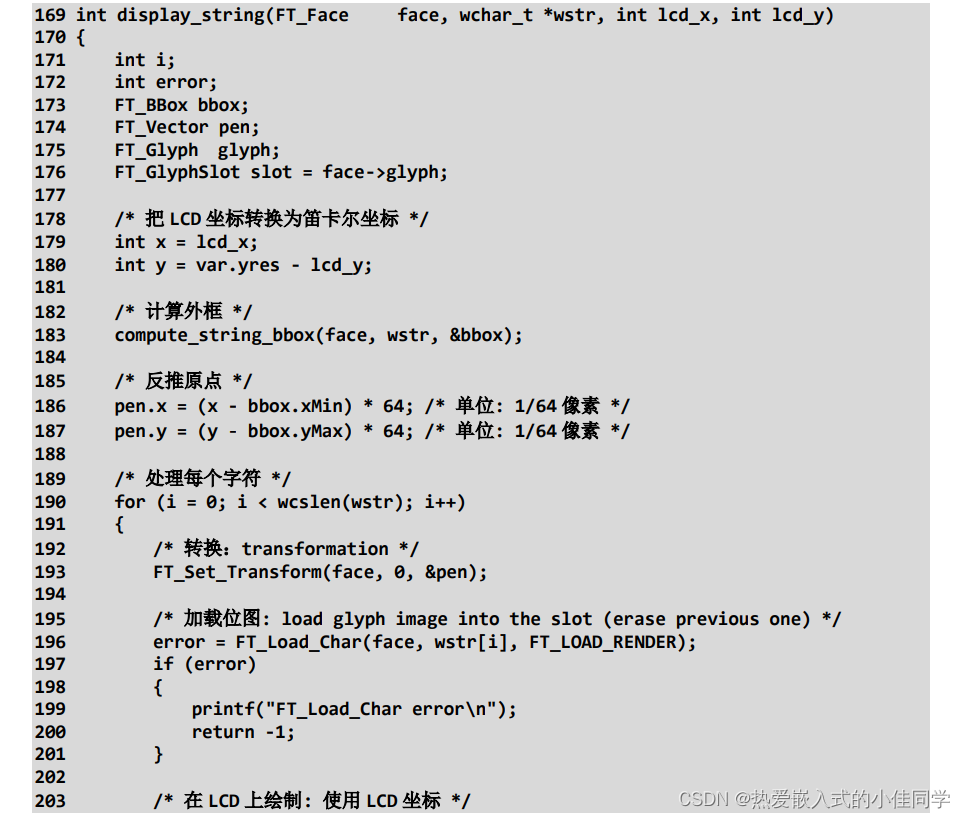

7.编译
show_line.c
#include <sys/mman.h>
#include <sys/types.h>
#include <sys/stat.h>
#include <unistd.h>
#include <linux/fb.h>
#include <fcntl.h>
#include <stdio.h>
#include <string.h>
#include <math.h>
#include <wchar.h>
#include <sys/ioctl.h>
#include <ft2build.h>
#include FT_FREETYPE_H
#include FT_GLYPH_H
int fd_fb;
struct fb_var_screeninfo var; /* Current var */
struct fb_fix_screeninfo fix; /* Current fix */
int screen_size;
unsigned char *fbmem;
unsigned int line_width;
unsigned int pixel_width;
/* color : 0x00RRGGBB */
void lcd_put_pixel(int x, int y, unsigned int color)
{
unsigned char *pen_8 = fbmem+y*line_width+x*pixel_width;
unsigned short *pen_16;
unsigned int *pen_32;
unsigned int red, green, blue;
pen_16 = (unsigned short *)pen_8;
pen_32 = (unsigned int *)pen_8;
switch (var.bits_per_pixel)
{
case 8:
{
*pen_8 = color;
break;
}
case 16:
{
/* 565 */
red = (color >> 16) & 0xff;
green = (color >> 8) & 0xff;
blue = (color >> 0) & 0xff;
color = ((red >> 3) << 11) | ((green >> 2) << 5) | (blue >> 3);
*pen_16 = color;
break;
}
case 32:
{
*pen_32 = color;
break;
}
default:
{
printf("can't surport %dbpp\n", var.bits_per_pixel);
break;
}
}
}
/**********************************************************************
* 函数名称: draw_bitmap
* 功能描述: 根据bitmap位图,在LCD指定位置显示汉字
* 输入参数: x坐标,y坐标,位图指针
* 输出参数: 无
* 返 回 值: 无
* 修改日期 版本号 修改人 修改内容
* -----------------------------------------------
* 2020/05/12 V1.0 zh(angenao) 创建
***********************************************************************/
void
draw_bitmap( FT_Bitmap* bitmap,
FT_Int x,
FT_Int y)
{
FT_Int i, j, p, q;
FT_Int x_max = x + bitmap->width;
FT_Int y_max = y + bitmap->rows;
//printf("x = %d, y = %d\n", x, y);
for ( j = y, q = 0; j < y_max; j++, q++ )
{
for ( i = x, p = 0; i < x_max; i++, p++ )
{
if ( i < 0 || j < 0 ||
i >= var.xres || j >= var.yres )
continue;
//image[j][i] |= bitmap->buffer[q * bitmap->width + p];
lcd_put_pixel(i, j, bitmap->buffer[q * bitmap->width + p]);
}
}
}
int compute_string_bbox(FT_Face face, wchar_t *wstr, FT_BBox *abbox)
{
int i;
int error;
FT_BBox bbox;
FT_BBox glyph_bbox;
FT_Vector pen;
FT_Glyph glyph;
FT_GlyphSlot slot = face->glyph;
/* 初始化 */
bbox.xMin = bbox.yMin = 32000;
bbox.xMax = bbox.yMax = -32000;
/* 指定原点为(0, 0) */
pen.x = 0;
pen.y = 0;
/* 计算每个字符的bounding box */
/* 先translate, 再load char, 就可以得到它的外框了 */
for (i = 0; i < wcslen(wstr); i++)
{
/* 转换:transformation */
FT_Set_Transform(face, 0, &pen);
/* 加载位图: load glyph image into the slot (erase previous one) */
error = FT_Load_Char(face, wstr[i], FT_LOAD_RENDER);
if (error)
{
printf("FT_Load_Char error\n");
return -1;
}
/* 取出glyph */
error = FT_Get_Glyph(face->glyph, &glyph);
if (error)
{
printf("FT_Get_Glyph error!\n");
return -1;
}
/* 从glyph得到外框: bbox */
FT_Glyph_Get_CBox(glyph, FT_GLYPH_BBOX_TRUNCATE, &glyph_bbox);
/* 更新外框 */
if ( glyph_bbox.xMin < bbox.xMin )
bbox.xMin = glyph_bbox.xMin;
if ( glyph_bbox.yMin < bbox.yMin )
bbox.yMin = glyph_bbox.yMin;
if ( glyph_bbox.xMax > bbox.xMax )
bbox.xMax = glyph_bbox.xMax;
if ( glyph_bbox.yMax > bbox.yMax )
bbox.yMax = glyph_bbox.yMax;
/* 计算下一个字符的原点: increment pen position */
pen.x += slot->advance.x;
pen.y += slot->advance.y;
}
/* return string bbox */
*abbox = bbox;
}
int display_string(FT_Face face, wchar_t *wstr, int lcd_x, int lcd_y)
{
int i;
int error;
FT_BBox bbox;
FT_Vector pen;
FT_Glyph glyph;
FT_GlyphSlot slot = face->glyph;
/* 把LCD坐标转换为笛卡尔坐标 */
int x = lcd_x;
int y = var.yres - lcd_y;
/* 计算外框 */
compute_string_bbox(face, wstr, &bbox);
/* 反推原点 */
pen.x = (x - bbox.xMin) * 64; /* 单位: 1/64像素 */
pen.y = (y - bbox.yMax) * 64; /* 单位: 1/64像素 */
/* 处理每个字符 */
for (i = 0; i < wcslen(wstr); i++)
{
/* 转换:transformation */
FT_Set_Transform(face, 0, &pen);
/* 加载位图: load glyph image into the slot (erase previous one) */
error = FT_Load_Char(face, wstr[i], FT_LOAD_RENDER);
if (error)
{
printf("FT_Load_Char error\n");
return -1;
}
/* 在LCD上绘制: 使用LCD坐标 */
draw_bitmap( &slot->bitmap,
slot->bitmap_left,
var.yres - slot->bitmap_top);
/* 计算下一个字符的原点: increment pen position */
pen.x += slot->advance.x;
pen.y += slot->advance.y;
}
return 0;
}
int main(int argc, char **argv)
{
wchar_t *wstr = L"百问网www.100ask.net";
FT_Library library;
FT_Face face;
int error;
FT_BBox bbox;
int font_size = 24;
int lcd_x, lcd_y;
if (argc < 4)
{
printf("Usage : %s <font_file> <lcd_x> <lcd_y> [font_size]\n", argv[0]);
return -1;
}
lcd_x = strtoul(argv[2], NULL, 0);
lcd_y = strtoul(argv[3], NULL, 0);
if (argc == 5)
font_size = strtoul(argv[4], NULL, 0);
fd_fb = open("/dev/fb0", O_RDWR);
if (fd_fb < 0)
{
printf("can't open /dev/fb0\n");
return -1;
}
if (ioctl(fd_fb, FBIOGET_VSCREENINFO, &var))
{
printf("can't get var\n");
return -1;
}
if (ioctl(fd_fb, FBIOGET_FSCREENINFO, &fix))
{
printf("can't get fix\n");
return -1;
}
line_width = var.xres * var.bits_per_pixel / 8;
pixel_width = var.bits_per_pixel / 8;
screen_size = var.xres * var.yres * var.bits_per_pixel / 8;
fbmem = (unsigned char *)mmap(NULL , screen_size, PROT_READ | PROT_WRITE, MAP_SHARED, fd_fb, 0);
if (fbmem == (unsigned char *)-1)
{
printf("can't mmap\n");
return -1;
}
/* 清屏: 全部设为黑色 */
memset(fbmem, 0, screen_size);
error = FT_Init_FreeType( &library ); /* initialize library */
error = FT_New_Face( library, argv[1], 0, &face ); /* create face object */
FT_Set_Pixel_Sizes(face, font_size, 0);
display_string(face, wstr, lcd_x, lcd_y);
return 0;
}
编译:
arm-buildroot-linux-gnueabihf-gcc -o show_line show_line.c -lfreetype8.上机测试
将编译好的 show_line 文件与 simsun.ttc 字体文件拷贝至开发板,这 2 个文件放在同一个目录下,然后执行以下命令(其中的 3 个数字分别表示 LCD 的 X 坐标、Y 坐标、字体大小):
./show_line ./simsun.ttc 10 200 80如果实验成功,可以在 LCD 上看到一行文字“百问网 www.100ask.net”。

